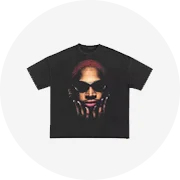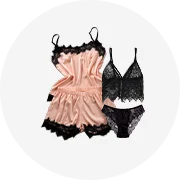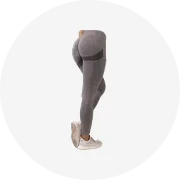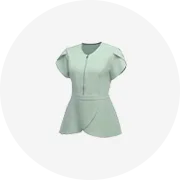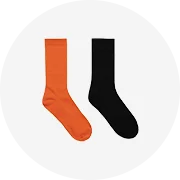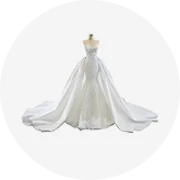Types of Waist Adjusters for Pants
A waist adjuster for pants is a specialized device designed to modify the waist size of trousers, ensuring a perfect fit for various body types. These mechanisms come in several distinct styles, each with unique advantages for different applications.
Elastic Waistband
The most versatile and widely used waist adjustment solution, particularly common in casual wear, children's clothing, and athletic apparel. The elastic material stretches to accommodate different waist sizes while maintaining comfort and allowing unrestricted movement.
Best for: Casual wear, activewear, children's clothing
Drawstring Waistband
Popular in casual and athletic pants like cargo trousers, sweatpants, and lounge wear. Features a cord threaded through the waistband that can be pulled tight and tied to achieve a customized fit. Offers both functionality and a distinctive casual aesthetic.
Best for: Sweatpants, cargo pants, casual wear
Belt Loops
The classic solution for formal and casual pants alike. These fabric loops are sewn into the waistband to accommodate a belt, allowing for precise waist adjustment while adding a stylish finishing touch to the garment.
Best for: Formal pants, jeans, versatile adjustment
Adjustable Waist Tabs
Primarily found in children's clothing, these tabs are sewn into the side or back seams of pants. They can be pulled and secured to achieve a better fit without permanent alterations, making them ideal for growing children.
Best for: Children's pants, growing kids, hidden adjustment
Velcro Strips
An accessible solution for those with limited dexterity, including children and individuals with disabilities. These strips allow for quick and easy waist adjustments without complex fastening mechanisms.
Best for: Adaptive clothing, quick adjustments, ease of use
Side Elastic Inserts
Commonly found in women's dress pants and slacks, these elastic panels are discreetly integrated into the side seams of the waistband, allowing for greater comfort and flexibility while maintaining a polished appearance.
Best for: Women's dress pants, comfort with formal look
Button and Buttonhole Adjustments
A sophisticated adjustment method for formal pants and premium jeans. Multiple buttonholes along the waistband allow for discrete size adjustment while maintaining a clean, professional look.
Best for: Formal wear, premium jeans, discrete adjustment
Waist Reducer Belt
An external solution worn like a traditional belt but with enhanced size reduction capabilities. Features specialized mechanisms that can be tightened to secure pants firmly around the waist, particularly useful for plus-size clothing.
Best for: Plus-size clothing, significant size adjustment
Expert Tip: When selecting a waist adjuster type, consider not only the immediate fit but also how the pants will be worn throughout the day. For example, elastic waistbands offer excellent comfort for long sitting periods, while button adjustments provide more precise sizing for formal occasions.
| Adjuster Type | Best Applications | Adjustment Range | Visibility |
|---|---|---|---|
| Elastic Waistband | Casual & athleisure wear | 1-3 inches | Hidden |
| Drawstring | Athletic & lounge wear | 2-4 inches | Visible |
| Belt Loops | Formal & casual pants | Depends on belt | Visible |
| Waist Tabs | Children's clothing | 1-2 inches | Hidden |
| Button Adjustment | Formal pants | 1-1.5 inches | Hidden |
Specifications and Maintenance of Waist Adjusters
Understanding the key specifications and proper maintenance practices for waist adjusters ensures long-lasting performance and optimal comfort. When sourcing these essential components, consider the following critical factors:
Size
Available in diverse dimensions to accommodate everything from children's pants to plus-size garments. Proper measurement is crucial - always account for the specific waist sizes your target market requires, including allowance for comfortable adjustment range.
Material
Common materials include premium leather, durable plastics, corrosion-resistant metals, and high-quality elastics. Each material offers distinct advantages - leather provides durability and comfort, while metals offer superior strength for frequent adjustments.
Style
Available in numerous designs including traditional belts, discreet elastic bands, secure clips, decorative buttons, and functional straps. Each style serves a specific purpose and suits different pants types - formal pants benefit from hidden clips, while casual wear may feature visible drawstrings.
Color
Select colors that complement the pants fabric for a coordinated look. For versatile applications, neutral tones offer the greatest flexibility, while contrast colors can serve as a design feature for fashion-forward pants.
Maintenance Best Practices
Proper maintenance significantly extends the lifespan of waist adjusters and preserves their functionality. Implement these professional care practices:
| Maintenance Task | Frequency | Method | Benefits |
|---|---|---|---|
| Regular Cleaning | After 5-10 wears | Material-specific cleaning (follow manufacturer guidelines) | Prevents buildup of dirt and oils, maintains appearance |
| Inspection | Monthly | Visual and physical check of components and stitching | Identifies early signs of wear before failure occurs |
| Storage | When not in use | Clean, dry area away from direct sunlight | Prevents material degradation and discoloration |
| Heat Protection | Ongoing | Keep away from heat sources, especially leather components | Prevents warping, cracking, and material breakdown |
| Replacement | When visibly worn | Replace with same quality or better components | Maintains pant functionality and appearance |
Important: Never machine wash pants with metal or leather waist adjusters without checking the care label first. Many adjustment components require special care to prevent damage to both the adjuster and the garment.
How to Choose Waist Adjusters for Pants
Selecting the optimal waist adjuster requires careful consideration of multiple factors to ensure both functionality and customer satisfaction. This comprehensive selection guide will help you identify the most suitable options for your specific requirements.
Gender Considerations
Women's designs typically favor discreet, hidden adjustment mechanisms that preserve a smooth silhouette, while men's styles may incorporate visible components as part of the overall design. Consider your target demographic's preferences before selection.
Comfort Priority
Prioritize adjusters that offer both functionality and wearer comfort. Elastic bands provide gentle tension and flexibility, while rigid components like metal clips should feature rounded edges and protective covers to prevent skin irritation during extended wear.
Pants Type Compatibility
Match adjuster strength to fabric weight - heavy-duty denim requires robust adjustment systems like reinforced buttons or metal clasps, while lightweight dress pants benefit from subtle elastic inserts or internal tab systems.
Size Range & Adjustability
Ensure your chosen adjuster accommodates your full size range, with special attention to plus-size requirements. The ideal system offers several inches of adjustment while maintaining comfort and appearance throughout the adjustment range.
Style & Aesthetics
Select adjusters that complement your garment design - consider whether the mechanism will be a visible design element or a concealed functional component. Neutral colors offer versatility, while matched or contrasting colors can enhance the overall design aesthetic.
Quality & Durability
Source components from reputable suppliers with proven quality standards. Premium adjusters feature reinforced stitching, rust-resistant metals, and fade-resistant materials that maintain performance through repeated washing and wearing cycles.
Professional Recommendation: When designing pants with waist adjusters, consider incorporating a combination of adjustment methods for maximum versatility. For example, dress pants might feature both internal button adjustments and belt loops, allowing wearers to fine-tune their fit according to preference and occasion.
Selection Chart by Pants Type
| Pants Type | Recommended Primary Adjuster | Alternative Option | Key Consideration |
|---|---|---|---|
| Formal/Dress Pants | Hidden Button Adjustments | Side Elastic Inserts | Maintain clean appearance |
| Casual Jeans | Belt Loops | Button Adjustments | Durability with heavy fabric |
| Athletic Wear | Drawstring | Full Elastic Waistband | Movement flexibility |
| Children's Pants | Adjustable Waist Tabs | Elastic Waistband | Growth accommodation |
| Plus-Size Pants | Stretch Panels with Belt Loops | Waist Reducer Belt | Comfort with adequate support |
DIY Installation and Replacement of Waist Adjusters
When waist adjusters become worn or damaged, replacing them can extend the life of your pants and restore proper fit. This professional guide provides step-by-step instructions for successfully installing or replacing various waist adjuster types.
Preparation and Materials
Before beginning the replacement process, gather these essential supplies:
- Replacement adjuster - appropriate for your pants type and size
- Sewing kit - including scissors, seam ripper, pins, and appropriate thread
- Measuring tape - for precise placement and sizing
- Iron - for preparing fabric and finishing the installation
- Tailor's chalk - for marking placement points
Select the appropriate replacement adjuster - Consider the pants type, fabric weight, and intended use. Choose an adjuster that matches or improves upon the original in terms of quality and functionality.
Gather necessary tools and materials - Ensure you have all required sewing supplies and that your workspace is well-lit and comfortable for detailed work.
Remove the old waist adjuster - Carefully use a seam ripper to remove the stitches securing the old adjuster. Work slowly to avoid damaging the surrounding fabric, especially with delicate or lightweight materials.
Prepare the fabric - Clean the installation area and iron if necessary to create a smooth, even surface for the new adjuster. For frayed areas, consider reinforcing with interfacing.
Position and pin the new adjuster - Align the replacement adjuster according to the manufacturer's instructions, using pins to secure it in the correct position before sewing.
Secure the new adjuster - Using appropriate thread and stitch type, sew the new adjuster into place. For elastic components, ensure they're properly stretched during installation.
Test the adjustment mechanism - Before finalizing, test the adjuster to ensure it functions properly and provides the desired fit range without causing fabric distortion.
Finish the installation - Trim any excess thread, remove pins, and press the area with an iron if appropriate for the fabric type to complete the installation.
Safety Note: When replacing waist adjusters with metal components, be careful of sharp edges and points that could damage fabric or cause injury. Consider filing down any rough edges before installation.
Professional Technique: For elastic waistbands, sew with a zigzag stitch while gently stretching the elastic to allow for proper contraction when released. This ensures the waistband will retain its elasticity after installation.
Frequently Asked Questions
A high-quality waist adjuster exhibits several key characteristics: durable materials (premium steel for clips, high-grade elastic with excellent recovery properties, or genuine leather for belts), precise manufacturing with smooth edges and secure closures, and reinforced stitching at stress points. Quality adjusters maintain their functionality after multiple washing cycles and don't lose elasticity or structural integrity with regular use. Professional buyers should examine sample products, read customer reviews, and request material specifications from suppliers to verify quality standards.
Yes, many suppliers offer extensive customization options for waist adjusters. Brands can specify custom colors to match their palette, add embossed or printed logos for brand recognition, select specialized materials for specific performance characteristics, and even design proprietary closure mechanisms. Most manufacturers require minimum order quantities for customized components, typically ranging from 500-1000 units. Lead times for customized adjusters generally range from 3-6 weeks, depending on complexity and manufacturing requirements. Working with suppliers that provide prototyping services allows brands to test custom designs before full production.
Absolutely! Waist adjusters are versatile components that can enhance the fit and functionality of various garment types. They're commonly integrated into skirts to provide adjustable waist sizing, used in dresses to create cinching capabilities, incorporated into shorts for athletic and casual wear, and even adapted for use in specialized garments like maternity clothing where size accommodation is crucial. When implementing waist adjusters in alternative garments, consider the fabric weight, stress points, and movement requirements specific to each garment type to select the most appropriate adjustment mechanism.
The plus-size clothing market benefits from specialized waist adjustment solutions designed for both comfort and functionality. These include extra-wide elastic waistbands with superior stretch recovery, extended-length button adjustment systems that offer greater range of size accommodation, reinforced side elastic panels that provide discrete expansion capabilities, and specialized belt systems with longer adjustment ranges. When manufacturing plus-size pants, it's essential to use waist adjusters with reinforced attachment points to handle increased tension. The most effective plus-size designs combine multiple adjustment methods to provide both comfort and secure fit across various body shapes.






















































